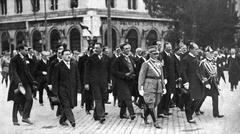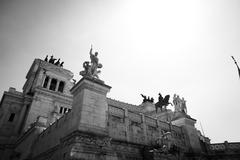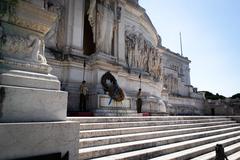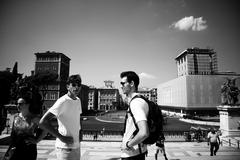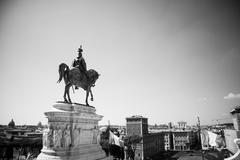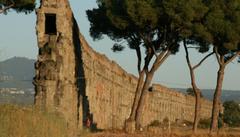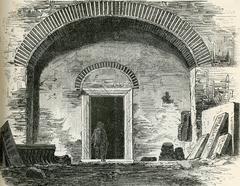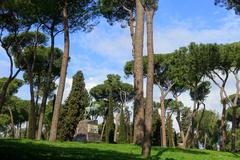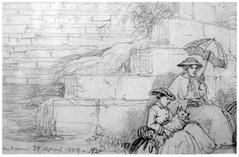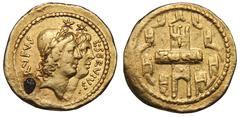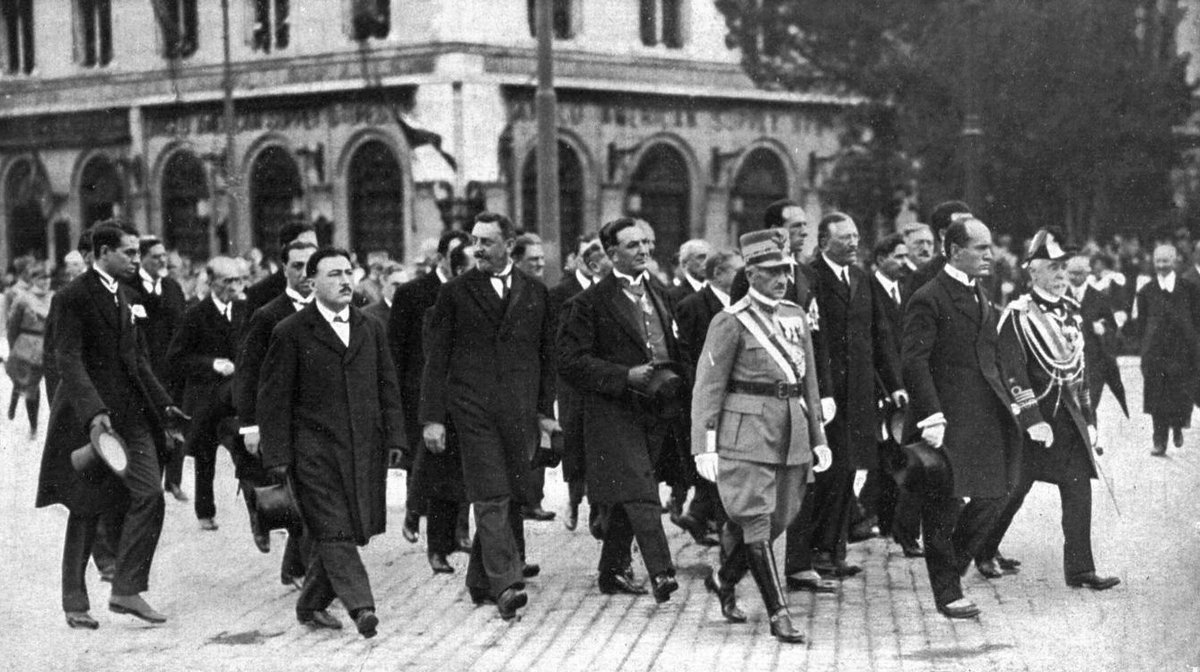
Comprehensive Guide to Visiting Altare della Patria, Rome, Italy: History, Significance, Visitor Tips, and Everything Tourists Need to Know for a Memorable Experience
Date: 31/07/2024
Introduction
The Altare della Patria, also known as the Victor Emmanuel II Monument or Il Vittoriano, stands as one of Rome’s most iconic and historically significant landmarks. This grandiose structure, situated in Piazza Venezia, is a testament to Italy’s rich cultural heritage and the unification of the country. Designed by architect Giuseppe Sacconi in 1885, the monument was conceived to honor Victor Emmanuel II, the first king of a united Italy, and to commemorate the country’s unification in 1861 (rome.us). The Altare della Patria is not just an architectural marvel; it is a symbol of national pride and unity, featuring a blend of Greek, German, and Teutonic design elements that set it apart from traditional Roman styles (roma-pass.com). Despite controversies surrounding its construction, such as the demolition of medieval ruins and the use of non-local materials, the monument remains a beloved and essential part of Rome’s historical landscape (romeing.it). This comprehensive guide aims to provide visitors with all the necessary information, from its historical background and architectural highlights to practical tips for making the most of their visit.
Table of Contents
- Introduction
- History and Significance
- Museums and Exhibits
- Panoramic Views
- Visiting Information
- Photographic Spots
- FAQ
- Conclusion and Call to Action
History and Significance
Origins and Construction
The construction of the Altare della Patria began in 1885 after architect Giuseppe Sacconi won an architectural contest with his design. The project was ambitious and required the demolition of several medieval churches and ruins, particularly in the northern part of the Capitoline Hill, to make way for the new structure (rome.us).
Sacconi, unfortunately, did not live to see the completion of his masterpiece; he passed away in 1905. The construction was subsequently overseen by Manfredo Manfredi, Pio Piacentini, and Gaetano Koch. The monument was inaugurated in 1911 to mark the fiftieth anniversary of the Kingdom of Italy, although it was not fully completed until 1935 (romeing.it).
Architectural Features
The Altare della Patria is an imposing structure made of white marble, standing 135 meters wide and 70 meters high. It features a vast curved colonnade with fifteen-meter-tall columns, inspired by the double colonnade of the Domus Augustae. The monument is adorned with allegorical statues, columns, reliefs, frescoes, and majestic staircases. The architectural style is eclectic, incorporating elements from Greek, German, and Teutonic designs, rather than traditional Roman styles (roma-pass.com).
One of the most striking features of the monument is the bronze equestrian statue of Victor Emmanuel II, created by sculptor Enrico Chiaradia. This statue weighs fifty tons and is twelve meters long. Additionally, the monument includes two fountains representing the Adriatic and Tyrrhenian Seas, symbolizing Italy’s geographical boundaries (rome.us).
Symbolism and Controversy
The Altare della Patria was built to honor Victor Emmanuel II, the first king of a united Italy, who played a crucial role in the Italian Risorgimento, the movement for Italian unification. Victor Emmanuel II became a symbol of this movement after his army joined forces with Garibaldi and defeated the papal army, leading to the proclamation of the Kingdom of Italy in 1861 (rome.us).
Despite its significance, the monument has been a subject of controversy. Many Romans were unhappy with the demolition of valuable historical buildings to make way for the new structure. Additionally, the use of Brescian stone from Northern Italy, rather than local Roman materials, has been a point of contention. The monument’s massive size and stark contrast to the surrounding ancient buildings have also led to mixed feelings among locals, earning it nicknames like “The Wedding Cake” and “The Giant Typewriter” (romeing.it).
The Tomb of the Unknown Soldier
One of the most poignant features of the Altare della Patria is the Tomb of the Unknown Soldier, added in 1921. This tomb honors an unidentified Italian soldier who died during World War I and serves as a symbol for all soldiers who lost their lives in war. The tomb is guarded by an eternal flame and soldiers, adding a solemn and respectful element to the monument (romeing.it).
Museums and Exhibits
Inside the Altare della Patria, visitors can explore the Institute for the History of the Italian Risorgimento and the Central Museum of the Risorgimento. These museums are dedicated to the unification of Italy and house a variety of historical artifacts, including weapons, flags, and documents related to the Risorgimento. The frescoes and murals inside the monument depict various regions of Italy, further emphasizing the theme of national unity (rome.us).
Panoramic Views
One of the most popular attractions of the Altare della Patria is the panoramic view from its terraces. Visitors can either climb the 243 steps or take the Roma dal Cielo elevator to reach the upper terraces. From here, they can enjoy breathtaking views of Rome, including sights of the Colosseum, Roman Forum, and Trevi Fountain. The terraces provide a unique vantage point to appreciate the city’s historical and architectural beauty (romeing.it).
Visiting Information
Visiting Hours and Tickets
The Altare della Patria is open every day from 9:30 am to 7:30 pm, with last admission at 6:45 pm. Entry to the monument is free, but there is a fee for the Roma dal Cielo elevator to the Quadrigae Terrace. Prices for the elevator are generally around €10 for adults and may vary for children and seniors. It’s advisable to check the official website for the most current prices and any special events (roma-pass.com).
Accessibility and Nearby Attractions
The monument is accessible to visitors with mobility issues, as it features elevators and ramps. Nearby attractions include the Roman Forum, Colosseum, and Trevi Fountain, all within walking distance. Guided tours of the monument and surrounding areas are available and provide deeper insights into the historical significance of these sites. (Rome Site)
Photographic Spots
The Altare della Patria offers numerous spots for photography enthusiasts. The panoramic terraces, the grand staircases, and the intricate architectural details all provide excellent backdrops for stunning photos. The best time for photography is during the golden hours of early morning or late afternoon when the light enhances the monument’s features (My Adventures Across the World).
FAQ
Q: What are the Altare della Patria visiting hours?
A: The monument is open daily from 9:30 am to 7:30 pm, with last admission at 6:45 pm (rome.us).
Q: How much are the tickets for the Altare della Patria?
A: Entry to the monument is free, but the Roma dal Cielo elevator to the Quadrigae Terrace costs around €10 for adults. Prices may vary for children and seniors (romeing.it).
Q: Is the Altare della Patria accessible?
A: Yes, the monument is accessible to visitors with mobility issues, featuring elevators and ramps (roma-pass.com).
Q: What are some nearby attractions?
A: Nearby attractions include the Roman Forum, Colosseum, and Trevi Fountain, all within walking distance (rome.us).
Conclusion and Call to Action
The Altare della Patria stands as a symbol of Italian unity and the legacy of Victor Emmanuel II. Its grand architecture, historical significance, and panoramic views make it a must-visit destination for anyone exploring Rome. Despite its controversial past, the monument continues to be a symbol of national pride and a testament to Italy’s rich history. Don’t miss out on this iconic site during your visit to Rome. For more travel tips and updates, download our mobile app Audiala, check out other related posts, and follow us on social media. (Culture Trip)
References
- Rome.us Squares and Fountains. Altar of the Fatherland
- Romeing.it. Altar of the Fatherland of Rome
- Roma-pass.com. Altar of the Fatherland
- Culture Trip. A History of the Altare della Patria in 60 Seconds
- Rome Site. Monumento Vittorio Emanuele II
- Saturdays in Rome. Favorite Sites in Rome: Altare della Patria
- Rome.info. Attractions: Altare della Patria
- Roma Wonder. Altar of the Fatherland
- My Adventures Across the World. Altar of the Fatherland Rome
- Roma Wonder. Altare della Patria: Interesting Facts & History
